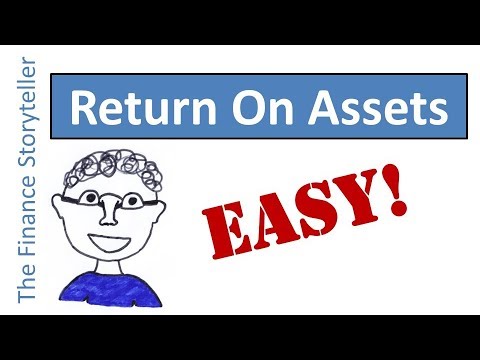Contents
FXCM reserves the final right, in its sole discretion, to change you leverage settings. To reduce the risks, brokers tend to lower the leverage ratios when major market swings are expected. Some of these events are during major elections, major referendums, and major economic data releases.
At AvaTrade, forex traders can trade with a leverage of up to . This however, varies depending on your jurisdiction as well as the asset class you are trading. Leverage allows traders to hold More Money Than God large positions in the Forex market with fewer capital. With leverage trading, traders can borrow money from a broker and hold larger positions, which in turn could magnify returns or losses.
FXCM does not anticipate more than one update a month, however extreme market movements or event risk may necessitate unscheduled intra-month updates. You also hereby confirm you understand that an increase in trade leverage can result in severe or total account loss. GO Markets is a non-advisory, general advice only broker, and will not provide you with investment or personal advice. For such advice, you must consult a registered financial advisor.
If on the other hand, you decided to use a leverage of 10, you would have a total trading capital of $10,000. A good example of leverage at work is when an investor borrows money to invest in a stock. Let’s say, the price of ACME’s stock is trading at $100 and you have $10,000, without leverage; the maximum number of shares you can buy is 100. If the company’s stock rises to $200 and you decide to exit, your maximum profit will be $10,000. The leverage you use, or need will also vary depending on the overall technique you employ. Your method and strategy might be relatively high in terms of risk versus reward.
Please note the minimum and maximum account balance required at the various leverage bands. You need to keep in mind that if your trading account balance moves into a new leverage band, your leverage will be changed according to the new leverage bands – we will notify you of this. Our GO Markets MetaTrader 4 platform has been designed to effectively monitor and allow you to control risk exposure.
What is the Best Level of Leverage in Forex for Beginners?
Trading on high leverage magnifies not only your profits but also your losses, making it one of the main reasons why new traders blow up their accounts. You should always have enough room to withstand negative price fluctuations, at least until your stop-loss levels. The best way to avoid margin calls is therefore to adopt strict risk management levels and avoid trading on extreme leverage. That’s because leverage allows them to control a much larger position size than their original trading account sizes.

Below are examples of margin requirements and the corresponding leverage ratios. Osi Momoh is an expert on corporate finance and accounting, bonds, trading, cryptocurrency, and much more. Osi has 10+ years of experience oil price forecast 2025 in the investment industry, having served as a client-facing broker, senior financial analyst, and managing financial editor. She earned her bachelor’s degree in finance from the University of Lethbridge and her M.S.
EDUCATION
Like any sharp instrument, leverage must be handled carefully—once you learn to do this, you have no reason to worry. The forex market is the largest in the world with more than $5 trillion worth of currency exchanges occurring daily. Leverage, which is the use of borrowed money to invest, is very common in forex trading. Trade popular currency pairs and CFDs with Enhanced Execution and no restrictions on stop and limit orders.
A trader should only use leverage when the advantage is clearly on their side. Leverage, however, can amplify both profits as well as losses. If currencies fluctuated as much as equities, brokers would not be able to provide as much leverage. Exinity triangle pattern forex Limited is a member of Financial Commission, an international organization engaged in a resolution of disputes within the financial services industry in the Forex market. Please try again later or contact We apologize for the inconvenience.
- The type of market traded can also dictate the amount of leverage traders can use.
- In order to employ leverage, a trader must have sufficient funds in his account to cover possible losses.
- Any trade using leverage that moves against the trader is going to create a loss that is much larger than it would have been without the use of leverage.
- Once the amount of risk in terms of the number of pips is known, it is possible to determine the potential loss of capital.
- Other ways to manage risk when using leverage are to keep positions small and to limit the amount of capital for each position.
Sign up for a demo account to hone your strategies in a risk-free environment. Call 844 IG USA FX or email We’re here 24 hours a day, from 3am Saturday to 5pm Friday . A guaranteed stop-loss order will be executed at the exact price you want, regardless of market volatility or gapping. For this benefit, there is a premium payable on execution of your order, which is displayed on the order ticket.
A margin call occurs when losses of an open trade position exceed your used margin. For instance, a margin call level of 20% means that your broker will send the margin call notification when your open trades have sustained losses of over 80% of your account balance. Margin trading involves a high level of risk and is not suitable for all investors. Forex and CFDs are highly leveraged products, which means both gains and losses are magnified. You should only trade in these products if you fully understand the risks involved and can afford to incur losses that will not adversely affect your lifestyle.
Is forex a good investment?
The majority of leveraged trading uses derivative products, meaning you trade an instrument that takes its value from the price of the underlying asset rather than owning the asset itself. Trader A chooses to apply 50 times real leverage on this trade by shorting US$500,000 worth of USD/JPY (50 x $10,000) based on their $10,000 trading capital. Because USD/JPY stands at 120, one pip of USD/JPY for one standard 1 2 Why Programming Why Java lot is worth approximately US$8.30, so one pip of USD/JPY for five standard lots is worth approximately US$41.50. If USD/JPY rises to 121, Trader A will lose 100 pips on this trade, which is equivalent to a loss of US$4,150. This single loss will represent a whopping 41.5% of their total trading capital. This is because the investor can always attribute more than the required margin for any position.
After returning the borrowed funds to the bank, your profit will be $20,000 minus the bank’s interest. Once you take the leverage on offer from your broker, you must meet the obligation of this liability. Whether the transaction wins or loses, you must pay for the principal amount. Leveraging helps you make more significant profits in a shorter period, potentially from a low capital base. There is no simple answer to this question because, in many ways, the best leverage to apply to your trades is a subjective and, at times, contentious issue. The information on this website is of a general nature only and does not consider your goals, financial situation or needs.
However, it will magnify both the profits and the losses from any trade, so it should be used with caution. Leverage is a tool used by traders that enables them to control a large amount of capital by putting down a much smaller amount. Unlike traditional investing, where you must tie up the full value of your position, with leveraged trading you only have to put up a smaller portion, known as margin. One of the main features of forex trading is the ability to utilize leverage.
This is one of the primary reasons why so many people are attracted to Forex, and more and more people have started to enter the Forex trading market. Many people want to get into Forex trading and make quick profits, but only a few even know how to start. While trading Forex online has now become easier than ever because of powerful platforms like Blueberry Markets, it can still feel incredibly overwhelming to get started with it. Using leverage enables you to free up a huge chunk of your capital to invest in other markets. And if you are not looking to diversify, leverage trading is one of the best ways to reach a greater market exposure. With leverage, you can speculate market movements and benefit from both rising and falling markets.

Many global corporations also trade in Forex to hedge currency risk. In case you are wondering is Forex trading profitable, the short answer is yes. But many opt for Forex traders to make fast profits since Forex markets are operational 24 hours for five days a week.
How Is Margin Trading Different in Forex vs. Stocks?
So when the market is bearish, you can go short to profit from the dip. Once you sell, you can buy an asset back at a lower price to widen the gap between the high selling price and the low buying profit. This way, you don’t risk too much of your account despite a falling market. Trading on leverage can increase both your profits and your losses, so it takes discipline to grow your account with leverage. One mistake could lead to large losses and blow up your account. Trading with leverage can be effective because it lets investors with less cash increase their trading power, increasing their returns from successful investments.
Yes, you can make a huge killing using huge leverage in forex trading and it certainly increases the potential profits in the Foreign Exchange market. But, you should also know that you could easily be killed by huge leverage provided by forex brokers as well. In the words of many forex traders and professional traders- leverage is a double-edged sword. Because of that, most beginner traders might prefer to start off using minimal leverage to get an idea of how to use proper risk management in order to minimise losses. More experienced traders may use higher-leverage accounts to maximise their wins and benefit from that advantages that forex has over other financial markets.
This means that your total profit is about $5 — and that’s before you pay broker fees. Based on the margin required by your broker, you can calculate the maximum leverage you can wield with your trading account. Margin is usually expressed as a percentage of the full amount of the position. For example, most forex brokers say they require 2%, 1%, .5% or .25% margin. Traders may also calculate the level of margin that they should use.
How Do Forex Traders Need to Use Leverage?
This is because profits and losses are based on the full value of the trade, and not just the deposit amount. Leverage in forex is a technique that enables traders to ‘borrow’ capital in order to gain a larger exposure to the forex market, with a comparatively small deposit. It offers the potential for traders to magnify potential profits, as well as losses. This is where the double-edged sword comes in, as real leverage has the potential to enlarge your profits or losses by the same magnitude. The greater the amount of leverage on the capital you apply, the higher the risk that you will assume.
TRADING ON LEVERAGE
Keeping your leverage lower protects your capital when you make losing trades and keeps your returns consistent. Leverage involves borrowing money to trade securities, and while this can significantly increase your gains, it also means you could lose more money than you put into the investment. There are a few steps that you can take to safeguard your initial investment when you use leverage.
Leverage is a very complex financial tool and should be respected as such. While it sounds fantastic in theory, the reality can be quite different once traders come to realize that leverage doesn’t only magnify gains, but it also magnifies losses. Any trade using leverage that moves against the trader is going to create a loss that is much larger than it would have been without the use of leverage. This is why caution is recommended until more experience with leverage is gained. In order to employ leverage, a trader needs to have sufficient funds in his account to cover possible losses.







